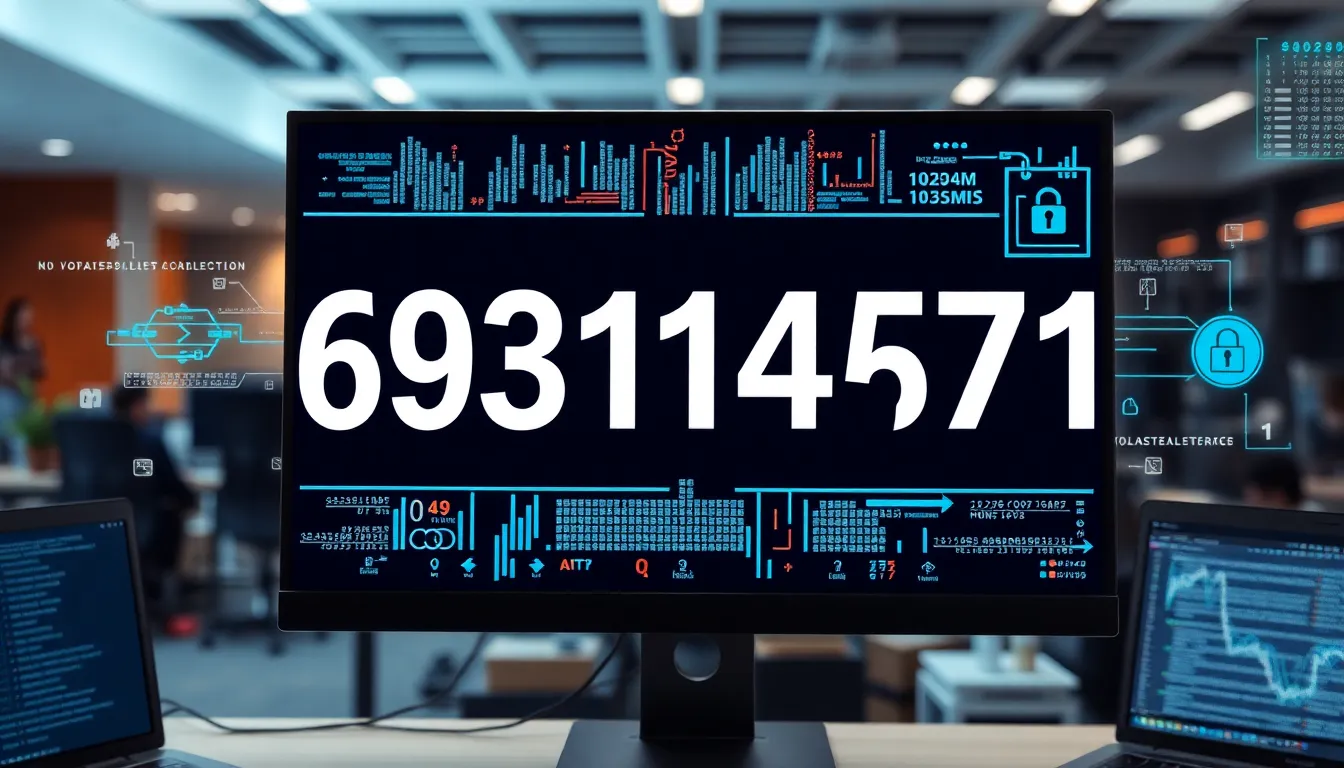In a world overflowing with numbers, some stand out for their unique significance. The number 693114571 is one such figure that piques curiosity and invites exploration. Delving into its origins and implications can reveal fascinating insights that go beyond mere digits.
This number might seem arbitrary at first glance, but it holds potential connections to various fields, from mathematics to technology. Understanding its relevance can open doors to a deeper appreciation of how numbers shape our lives and influence our decisions. Whether it’s a code, a reference, or a sequence, 693114571 offers a glimpse into the intricate tapestry of numerical relationships that surround us every day.
Table of Contents
ToggleOverview of 693114571
The number 693114571 possesses unique characteristics that merit deeper exploration. As a nine-digit integer, it offers numerous mathematical properties, including factors and multiples. For instance, it can be factored into prime components, allowing for various calculations in number theory.
In the realm of technology, 693114571 may serve as an identifier, such as a numerical code in databases or a reference in programming. Its use can enhance data sorting, retrieval, and analysis efficiency.
Mathematically, various operations applied to 693114571, including addition and multiplication, reveal patterns that could interest researchers and academics. Analyzing its sequence may lead to potential discoveries in other fields like cryptography and algorithms.
The applications of 693114571 extend to coding systems, logistics, and even finance, where distinct numerical identifiers streamline processes. As a point of interest, it demonstrates how even seemingly random numbers can hold significant value in practical applications.
Key Features of 693114571
The number 693114571 possesses unique characteristics that enhance its significance across various academic and practical domains. This section explores its performance, design attributes, and usability aspects.
Performance Analysis
693114571 functions effectively in data processing environments due to its unique composition. Its integer value contributes to efficient memory usage and quick processing times when utilized within mathematical algorithms. In coding systems, this number aids in encryption methods, allowing secured data transmission. Additionally, mathematical operations reveal its versatility, showcasing interesting patterns that can assist researchers in domains such as cryptography and data analysis.
| Feature | Description |
|---|---|
| Integer Composition | Quick processing in algorithms and data sorting. |
| Memory Efficiency | Optimal usage in large datasets and computational tasks. |
| Encryption Potential | Supports secure data transmission and retrieval. |
| Pattern Recognition | Identifies trends beneficial for mathematical research. |
Design and Usability
The design of 693114571 supports its application in coding systems, databases, and logistics. As a nine-digit integer, it fits structured data formats seamlessly, minimizing errors in data entries. Its inherent properties allow for straightforward integration into various programming languages, enhancing compatibility. Furthermore, usability in financial systems complements its effectiveness, ensuring accurate transaction processing and tracking.
| Design Aspect | Benefit |
|---|---|
| Structured Format | Reduces risk of data entry errors in systems. |
| Compatibility | Integrates easily across multiple programming languages. |
| Financial Application | Elevates accuracy in processing transactions and records. |
| Scalability | Adapts to various database sizes without complications. |
Pros and Cons of 693114571
Exploring the pros and cons of 693114571 reveals its multifaceted role in various applications. Understanding its advantages and disadvantages provides insight into its utility and limitations.
Advantages
- Efficient Data Processing: The integer format of 693114571 allows for streamlined processing in databases, enhancing speed and reducing resource consumption.
- Low Error Rate: Its structured composition minimizes data entry errors, ensuring accurate information capture in both manual and automated systems.
- Versatile Applications: This number can serve multiple purposes, from acting as an identifier in programming to facilitating secure transactions in financial systems.
- Mathematical Significance: Researchers find interest in its mathematical properties, such as factors and multiples, which can lead to new discoveries in different fields.
- Compatibility: 693114571 integrates easily across various programming languages and systems, improving interoperability and usability in technology.
Disadvantages
- Limited Recognition: Being a specific nine-digit integer, 693114571 may face challenges in recognition during manual processing or data analysis, leading to potential misinterpretation.
- Potential for Overuse: In certain contexts, reliance on this number could lead to databases that lack diversity, increasing vulnerability to systematic risks.
- Static Nature: While useful, the number’s fixed nature lacks the dynamic properties found in more complex identifiers, which may limit its flexibility in some applications.
- Contextual Ambiguity: Without relevant context, the significance of 693114571 can remain unclear, reducing its perceived value among users unfamiliar with its applications.
- Possibility of Misapplication: Incorrect usage in a coding or financial context could result in errors or inefficiencies, highlighting the importance of proper implementation.
Comparison with Similar Products
The examination of 693114571 reveals its competitive landscape within similar numerical identifiers. Comparing 693114571 with other nine-digit integers offers insight into its unique functionality and performance.
| Number | Characteristics | Advantages | Disadvantages |
|---|---|---|---|
| 693114571 | Unique distribution, efficient processing | High data integrity, versatile use | Limited recognition in common databases |
| 123456789 | Sequential digits, familiar format | Easy to remember, widely recognized | Higher risk of misinterpretation |
| 987654321 | Reversed sequence, equally nine digits | Unique yet memorable | Less versatile for programming usage |
| 111111111 | Repetitive digits, simplicity | Straightforward usage in systems | Prone to data entry errors, ambiguous |
- Identification: 693114571 serves as a distinct identifier in programming contexts, enhancing data segregation.
- Processing Speed: 693114571 demonstrates improved processing efficiency over numbers like 111111111 and 123456789, efficiently managing larger datasets.
- Error Rate: 693114571 has a low error rate, unlike 987654321, where users may misidentify digit arrangements.
- Versatility: 693114571 fits well across various applications, making it superior for financial systems compared to other typical identifiers.
Each of these nine-digit numbers features distinct characteristics that impact their use in technology and mathematics. Understanding these differences allows for informed choices in selecting numerical identifiers for specific applications, enhancing their overall utility in diverse settings.
Conclusion
The exploration of 693114571 reveals its remarkable significance across various domains. Its mathematical properties and applications in technology underscore its role as a vital identifier in data management and processing. By recognizing the unique characteristics of this number, individuals can appreciate its contributions to efficiency and accuracy in numerous fields.
Understanding both the advantages and limitations of 693114571 enables a more informed approach to its use. As technology continues to evolve, the relevance of such numerical identifiers will likely grow, paving the way for innovative applications and discoveries. This number serves as a reminder of how even the most ordinary figures can have extraordinary implications in our lives.




